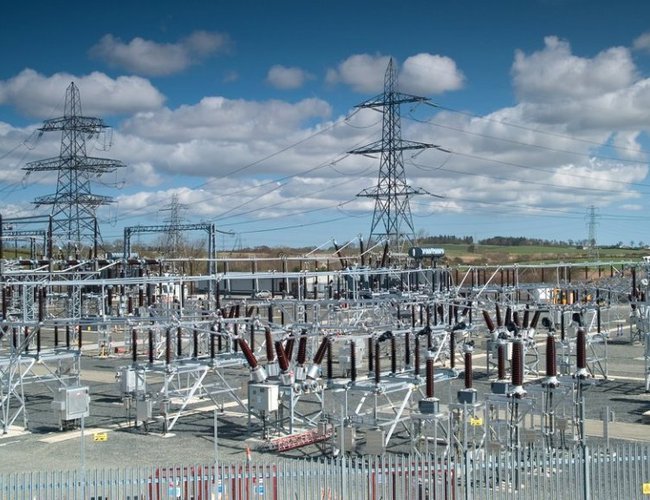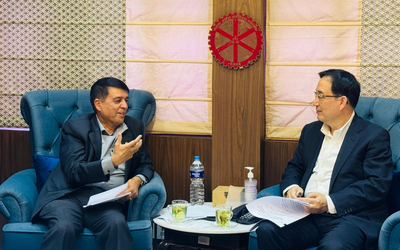
With strong political support from India and Nepal and the expertise of proficient technicians from both nations, the electricity trade between Nepal and India has flourished, enabling Nepal to transition from a net importer to a net exporter of electricity.
In the past, the electricity trade with India was often perceived as a mere fantasy due to insufficient engagement from the Indian side.
However, with the encouragement of Indian Prime Minister Narendra Modi and the effective leadership of Kul Man Ghising, Managing Director of the Nepal Electricity Authority, the long-held belief that India would not procure electricity from Nepal has been significantly transformed.
Commencing three years ago, Nepal's electricity exports to India have experienced extraordinary growth. 1. The excess electricity produced after satisfying domestic requirements is currently being supplied to the Indian market, which aids in diminishing the trade deficit. With the backing of the Indian government and the expertise of skilled technicians from both countries, the electricity trade between Nepal and India has reached unprecedented levels, allowing Nepal to shift from being a net importer to a net exporter.

Since its establishment three years ago, Nepal's electricity exports to India have experienced significant growth. The surplus electricity, once domestic needs are met, is now being channeled to the Indian market, thus contributing to the reduction of the trade deficit.
In the initial month of the fiscal year 2081-82, electricity exports to India amounted to 4.19 billion rupees. During the month of Shrawan, the Nepal Electricity Authority successfully exported surplus electricity generated during the rainy season, resulting in revenue exceeding Rs. 4.19 billion (Rs. 4,193,924,000). In July alone, daily electricity exports were valued at Rs. 131.1 million.
Electricity trade with India is done in Indian rupees (Bharu). Therefore, in the month of July, two billion 62 million 12 lakh 3 thousand baht has been earned from the sale of electricity. The average rate of electricity exported in July is 8 rupees 51 paise per unit.
Kulman Ghising, managing director of the NEA, said that until eight years ago, the situation of load shedding for 8-9 hours a day during the rainy season and 18 hours during the dry season has ended, and currently, during the rainy season months , the excess electricity consumed within the country is exported more than 700 megawatts daily.
He mentioned that although there are occasional power outages due to natural and technical reasons, now there is no need for load shedding due to not being able to supply electricity according to demand.
Managing Director Ghising said, "Our first priority is to increase the electricity consumption within the country, to increase the consumption, transmission and distribution system improvement and expansion works have been implemented as a campaign, and the excess electricity consumed internally will be exported to the neighboring countries of India and Bangladesh."

’MD Ghising mentioned that the export of electricity to India during the rainy season and significant foreign exchange earnings are contributing positively to the country's foreign exchange reserves and reducing the trade deficit between Nepal and India.
‘Even though we have to import electricity for a few more months during the winter, the amount of import will gradually decrease. We have become net exporters from net importers by selling the excess electricity consumed in the country from last year in the Indian market, he said.
The authority is selling the excess electricity consumed within the country on the day-ahead and real-time market of Indian Energy Exchange (IX) at a competitive rate and in accordance with the bilateral medium-term electricity sales agreement to the Indian company NTPC Vidyut Vyar Nigam Ltd. Electricity is being sold in the state of Haryana.
The NEA has so far received approval to sell 941 MW of electricity produced by 28 projects in the Indian market in accordance with the competitive market and mid-term electricity sales agreement. A few days ago, in accordance with the bilateral agreement, an additional 251 megawatts of electricity was approved to the Indian states of Bihar and Haryana. Out of this, 125.89 MW generated from two more hydropower projects will be sold to Haryana state through NVVN. At present, 109.61 megawatts of electricity produced by the two projects is being sold in the state of Haryana.
125 MW of electricity generated from 10 hydropower projects will be exported to the state of Bihar through PTC, India as per the mid-term agreement. For the first time to export electricity to Bihar and more to Haryana, after completing the technical process, the export will be started soon.
Currently, 580.89 megawatts of electricity produced by 14 projects are being sold at IX at a competitive rate. As the electricity export of the quantity approved a few days ago has not started, currently 690.50 MW of electricity is being exported to IX and Haryana on a daily basis. 10 percent more electricity than the approved quantity can be exported. Therefore, more than 700 MW of electricity is currently being exported daily.
Electricity worth 16.93 billion rupees was imported from India last year. During this period, electricity worth 17.6 billion rupees was exported. In the last year, Nepal has become a net exporter of electricity from being a net importer of electricity by exporting more than 130 million rupees more than imports.
Similar to the electricity trade, there are numerous other sectors in which Nepal can derive significant advantages from the larger Indian market, contributing to the prosperity of the nation.
- MELAMCHI WATER SUPPLY: No Interruption During Monsoon
- Jun 25, 2025
- KOREAN RETURNEES: Successful Integration
- Jun 25, 2025
- UPPER TRISHULI-1: Engaging With Local
- Jun 25, 2025
- IME GROUP: Twenty Five Years Of Journey
- Jun 24, 2025
- NEPAL’S AIR POLLUTION: A Growing Health Concern
- Jun 24, 2025















